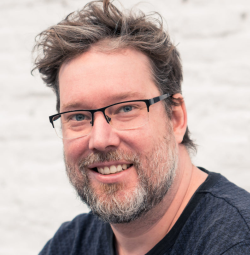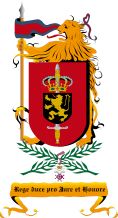Keynotes
Insights in Future Mobility
Abstract
Almost daily, we hear about disruptive innovations in mobility. It looks like within a few years, we will all be moving in flying cars and travelling through underground tunnels at supersonic speeds. These rapid changes present us with a lot of possibilities and even more questions. How will this new world look like? What is science-fiction and is already becoming reality?
And furthermore, how will companies cater to these future needs? Are they researching the strategically interesting options?
In this forecast study, Creax presents an objective view of the future of mobility and how it will impact the businesses involved. The technological and economic feasibility, as well as the societal and legal conditions of different emerging technologies and business models are involved. Based on industry renowned reports, trend research, a PESTEL analysis and own experiences in various industries, situational scenarios to better understand the impact of on-going future developments were developed and are discussed.
Curriculum Vitae
Thomas graduated in 2002 as a Master in Industrial Design from the Hogeschool West-Vlaanderen - Vlaamse Autonome Hogeschool. He started his career as a product designer at Pilipili and later at SMIDesign. Het was lectorer at the HoWest between 2007 and 2011. In parallel he was Industrial designer at ATOHMS. In 2012 he became the lead designer at Creax.
At CREAX, Thomas is a celebrated designer, winner of of several design awards, including red dot and If-awards. He is not only satisfied with just being creative he wants to understand the underlying problems to truly re-invent instead of re-designing. He excels at combining simplicity while improving User-experience and is a master in visualizing ideas. His sketches and concept visualizations are little pieces of art that help understand ideas before they even exist.
Specialties: fuzzy front-end idea/concept generation/exploration, TRIZ methodology, out-of-the-box-thinking, brain-storming/melting, fast visualising skills.
Ceres Megasatellite World
Abstract
In extraterrestrial settlements, humans need earthlike gravity to ensure good health of muscles and bones. The settlement should also be growable to potentially large size. Moon or Mars colonies lack earthlike gravity. Free-space rotating O'Neill cylinders provide full gravity, but they have a maximum size that comes from material tensile strength. Here we present a concept that combines the benefits of planetary living and O'Neill cylinders. We propose to attach several O'Neill cylinders in a common frame. The attachments are by magnetic bearings so there is no wear. The frame enables travel between the cylinders by propellantless vehicles resembling trains or cars. We place the megasatellite in high orbit of dwarf planet Ceres. The building materials are lifted from Ceres by rockets, space elevator, electromagnetic catapult or other method. The small gravity of Ceres makes the material lifting straightforward and energetically cheap. Ceres is selected because it has nitrogen for making the settlement atmospheres. The megasatellite in Ceres orbit could eventually host much larger population than Earth and provide better living standard than Earth due to the absence of natural disasters.
Curriculum Vitae
Dr. Pekka Janhunen has authored over 160 peer-reviewed scientific papers on mainly space plasma physics simulations and data analysis. For example, he is the author of the GUMICS global MHD simulation code to simulate Earth's magnetosphere and ionosphere. He is the inventor of the electric solar wind sail interplanetary propulsion method and the inventor of the plasma brake method to deorbit satellites for solving the orbital debris problem.
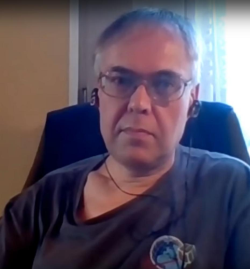
Research Manager, PhD Finnish Meteorological Institute /
Space Research and Observation Technologies
Barriers in Facilitating Trust in Artificial Actants
Abstract
New technologies and future trends for human-robotic or system teams is moving at an ever-increasing pace. For high-criticality domains, such as in Defence, the smooth integration and facilitation of these are imperative. Whilst robotics, AI or system teammates can aid in alleviating the cognitive strain and workload of operators; increase efficiency; or reduce error – how we interact with these ‘teammates’ on a psychosocial level is under researched. To facilitate appropriate reliance, trust, and capability on these emergent specialised systems, we should first explore the core hesitance and resistance operators may have with technology. Why do we feel uncomfortable around anthropomorphised avatars? Why do we not like the thought of a car driving for us? Why do we get that ‘gut-feeling’? This study explores how human-human and human-system teams differ by looking at the attitudes and behaviours of civilian and military personnel. It explores themes of trust, reliance and misuse and how there may be a fundamental issue in introducing artificial agents too quickly.
Curriculum Vitae
Dr Field has worked in Defence for over 7 years, specialising in human-system interaction at a macro- and micro- ergonomic level. She received her Doctorate from the University of Birmingham in 2020 in a collaborative partnership with BAE Systems. Her expertise is in qualitative research methodology, which seeks to explore the rich texture and nuance in lived experiences. Megan is currently a Research Fellow at the Saïd Business School in the University of Oxford, investigating social barriers impeding technology innovation in Healthcare.
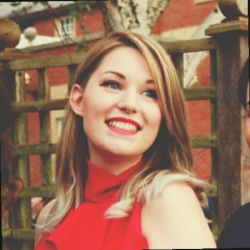
Research Fellow at Saïd Business School
University of Oxford
Oxford, United Kingdom
Fixing Broken Ecosystems with Autonomous Robot Swarms
Abstract
Ecosystems are currently breaking down world-wide, especially insect species are dramatically disappearing. In order to protect our society, which depends on the ecosystems it is a part of, we have to prevent further decline of bio-diversity. However, damages are already present and crucial „key-stone species“ are threatened. I have developed a three-step contingency strategy based on biological studies, mathematical modelling and autonomous robotics to react to this crisis. In various collaborative projects, my lab and international partner labs developed technology to monitor ecosystems with robot swarms on the large scale and on the long term. We also developed autonomous robots to directly interact with organisms (animals and plants) in order to be capable of rapid intervention, if necessary. We studied the collective swarm-behavior of two highly threatened animal groups (honeybees and fish) and, as a proof-of-principle demonstration, we have designed two “robot species” that can infiltrate those swarm systems and coordinate these very different animals with respect to each other. This way we have created, for the first time in history, a novel ecological link between two species by embedding autonomous robots in a small artificially created ecosystem. This shows that robots might offer a viable option to externally stabilize fragile, or even already broken, ecosystems. In my recent research, I try to use robotic devices to turn whole honeybee colonies into bio-hybrid robotic super-organisms to use them as a novel ecological agent.
Curriculum Vitae
Prof. Thomas Schmickl: Thomas Schmickl is full professor at the Institute of Biology at the University (Department of Zoology), Graz, Austria, where he supervises also the Artificial Life Lab, which he founded in 2007, after returning from a HHMI visiting professorship in the USA. In 2012, he was appointed the Basler Chair of Excellence at the East Tennessee State University (ETSU), USA.
His research focuses on biology, ecological modeling, bio-inspired engineering including swarm-, modular-, hormone-, and evolutionary-robotics. He also teaches ecological modeling and multi-agent simulations of biological and ecological systems. He was/is partner in the international EU-funded projects I-Swarm, Symbrion, Replicator, FloraRobotica, RoboRoyale and leading scientist and consortium coordinator of the EU grants CoCoRo, ASSISIbf, subCULTron, Atempgrad and Hiveopolis. These international grants all aim at improving the current state-of-the-art in robotics to let them be more similar to animals or plants in order to be adaptive, resilient and flexible. Recently, living organisms became parts of his targeted bio-hybrid robotic systems, in order to form a sustainable technological symbiosis. Recently, he founded the Field of Excellence COLIBRI (Complexity of Life in Basic Research & Innovation) at the Univ. of Graz, which is a network of 20+ full professors who research complexity sciences with a focus on living systems, joining forces across various disciplines.
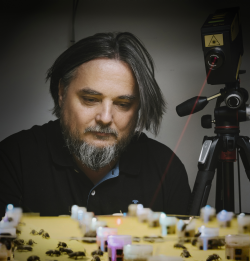
Copyright Uni Graz/Kernasenko
Artificial Life Lab, Institute of Biology
University of Graz
Graz, Austria
Invited Speaker
Artificial consciousness: Feasibility and challenges
Abstract
The human consciousness has always interested philosophers and this question is articulated with the nature of what thinking is and its immediate corollary, are humans (homo sapiens-sapiens) the only beings capable of thinking? This dominant posture is presented as evidence by many researchers. The metaphysical aspects of the existence of consciousness, mind, and soul are themes at the centre of religious beliefs that place man above other living beings on the earth. Other researchers question the ability of animals to think and to have a conscience ? In this context, our scientific approach is to identify (without pretending to be exhaustive) the main acceptances of the consciousness and to define the functionalities of an artificial consciousness. The next step is to examine the feasibility and challenges of implementing these different features in a computer system.
This study first relies on the state of the art regarding consciousness and artificial consciousness by examining the main obstacles raised by the authors and the criticisms of the main detractors. We show that these authors often have a piecemeal view of AI models that are limited to the use of data and knowledge management based on rules and formal logic. Today, much more powerful general models for the development of autonomous complex systems, especially multi-agent architectures are available. In order to study the feasibility, we drew on our previous article dealing with artificial thinking and the “insight” of the FVSOOMM model (Colloc, 2020) which offers the necessary operators to implement multi-agent systems that relie on our object model based on composition and temporal fuzzy vector spaces. We use the connective approach of our object model (Colloc et all, 1996a) and the modeling of brain, neuroendocrine, immune, peripheral nervous system interactions (Colloc2000b, colloc2000d) which are generally completely eluded by most authors. We believe that consciousness does not reside only in the brain but in the whole body, as Francisco Varela and Humberto Maturana explain (Hayward1992,1995) and (Varela1993).
Curriculum Vitae
Joël Colloc earned his M.D. at the medical faculty of Lyon and a specialty degree of forensic medicine with a degree of clinical toxicology. He received a MSc. degree of IT from the Business School of Lyon (IAE) and a MSc. degree of computer sciences from the engineering school INSA of Lyon. He served as forensic physician at the Edouard Herriot Hospital in the neurological emergency department to cure drug addicted people, medical ethics and developed drug and addiction database. He went on to earn his Ph.D. in computer sciences at the INSA of Lyon.
As Hospital assistant at the laboratory of medical computer science and he taught IT at the medical faculty. He was elected as associate professor in computer sciences at IAE of Lyon and he earned his accreditation to supervise researches in sciences at the Lyon 1 University. He is a Le Havre Normandy University professor in computer sciences since 2003.
His main research topics concern e-health and particularly: fuzzy vectorial spaces (FVS), multi-agent clinical decision support systems (MADSS) and knowledge bases, Case Based Reasoning, ontologies, nervous system modeling and cognitive sciences and AI applications in medicine and human sciences.
His human sciences researches try to conciliate the ethics of using Big Data in epidemiological studies, autonomous systems and robots and keeping ethics use of AI in order to improve clinical decision in medicine while preserving the patient-caregiver relationship, the privacy and the freewill choice of the patients.
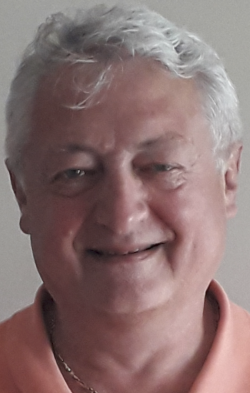
Université of Le Havre
Le Havre,France
